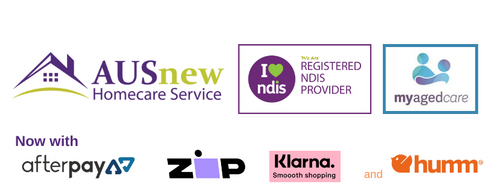I was three years old when I first figured out I was different from other kids.
The realisation hit me square in the middle of my tiny chest during an otherwise normal lunch at day care.
Seated around a table, I watched as my best friend back then finished her lunch and stood up easily, ready to go and play. I tried to follow her, confused when my body remained still. What was going on? I knew what I wanted to do, and it had looked simple enough, so why couldn't I do it?
The answer was that I had cerebral palsy, something I was born with and would have forever. That moment at day care was simply the first time I was actually aware there were things my body couldn't do that others could.
That awareness and confusion had just never happened to me before, I suppose because I was too young for it to register. But it changed everything and from then on, I've never been anything but painfully aware of it.
My next question was simple: were there other people like me?
Yes.
Where were they?
All over the world.
Why hadn't I seen them before?
No-one had an answer for that.
I would see them, eventually at therapy and in other social places. There would be other kids who looked and lived like me, who would become my friends.
But there was one place, where no matter how hard I looked, I wouldn't find them. And that was onscreen.
It took until I was 10 years old for that to change with Artie Abrams, from the smash hit musical Glee.
And Artie was by no means a perfect character. The fact he was played by the able-bodied Kevin McHale immediately dimmed the light he could have provided me because instead of this being someone I could look up to for having found the success and joy I so craved to know could be mine, he was able to cast it off, like a costume when the director yelled "Cut!"
When children can't and don't see themselves and the possibilities of their lives, joy and dreams in what they watch, read and play with, it's like a black hole gets torn inside them.
A hole that they will have to step around for the rest of their lives, constantly fighting off the feeling that their stories and voices don't matter, that they are inherently worth less than an able-bodied story or an able-bodied voice.
That hole lives inside me and many, many other people I know, and I've had enough.
I have never seen an animated film, a genre primarily made for children, with a disabled character in it. Not once.
When there are 1 billion people in the world, or at least 15 per cent of the world's population, living with some form of disability, many of whom have known it their whole lives, that is not good enough.
I grew up a massive Disney fan, in a world where their films have stood at the forefront of children's lives by providing high-quality emotionally intelligent entertainment full of valuable lessons and important tools to help all of us understand the world.
Supplied
)So, I am asking them with every fibre of my imagination to consider creating a Disabled Disney Princess as the main character in a feature-length animated film.
Princess characters are recognised by children around the world. They transcend cultural and language differences, and the status they assume as characters has the ability to help break stigmas and elevate the visibility of minorities.
We've seen the success of the Disney Princess brand diversifying in recent years, with the inclusion of princesses of colour Tiana (The Princess and The Frog) and Moana in the ranks.
If the magical seed of representation is planted at a young age, it will bloom into something precious and valuable.
Beyond that, it would also be providing a powerful reference point for non-disabled children to understand us and our lives; actively creating a culture of tolerance, acceptance, empathy and understanding to replace fear, confusion and the seeds of bigotry that are often unconsciously sowed when we are confronted with something different that is hard to understand.
Those children will then grow into better adults.
A disabled Disney princess won't turn back the clock and give my three-year-old self a character to love who looked like me.
It won't erase the damage of feeling invisible and unheard for years.
It won't take away my black hole. But it would help other disabled kids grows up feeling seen, feeling valid and without that hole inside them.
Hannah Diviney is a writer and disability advocate from Sydney, Australia. She's @hannah_diviney (Twitter) or on Instagram @hannahthewildflower.
Source: ABC
